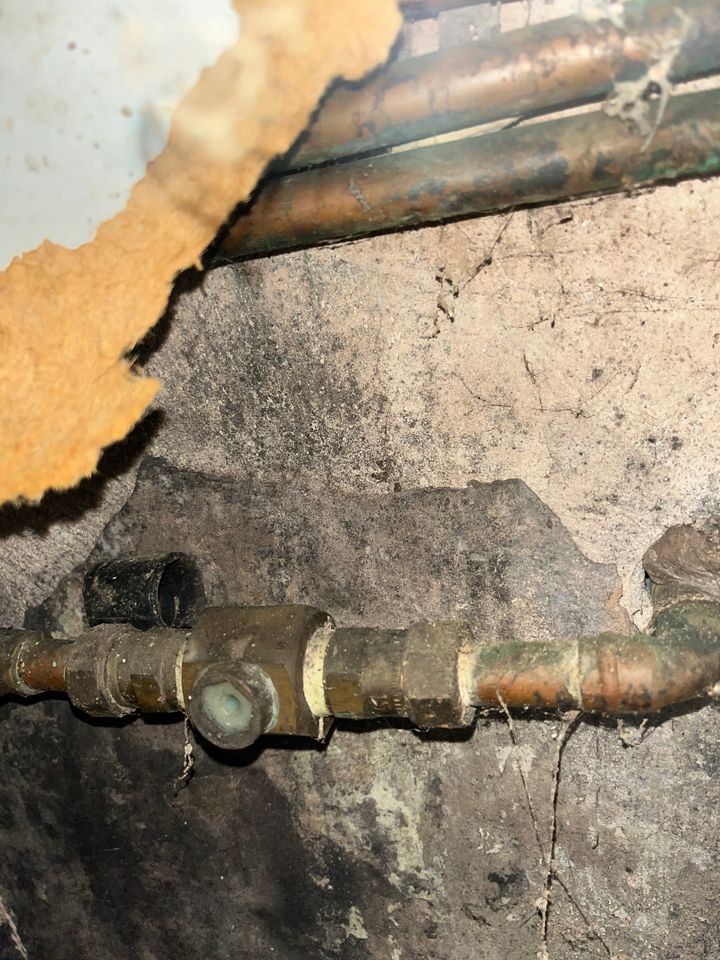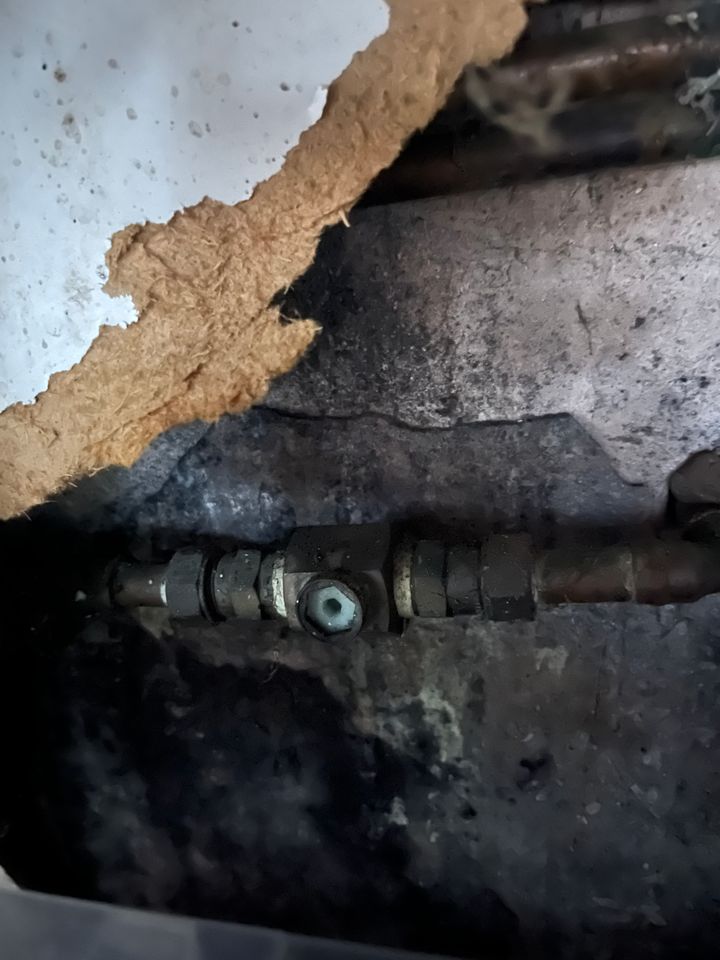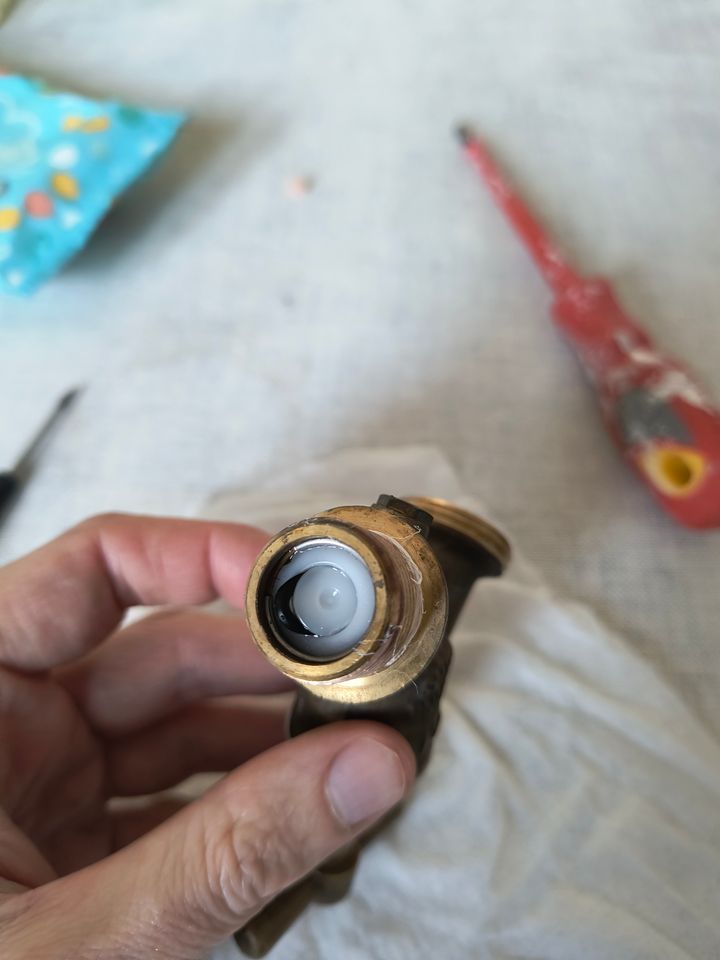Outside tap lost pressure
Discussion
Our outside tap has lost all pressure over the last couple of weeks and is now just a dribble,
Tap pressure inside is fine.
The feed is straight off the cold water pipe but goes through some kind of Valve / connector that I don’t recognise which I’m guessing is the issue
Can I just replace with a standard joint or do I need to get someone in to fit a new feed ?

Tap pressure inside is fine.
The feed is straight off the cold water pipe but goes through some kind of Valve / connector that I don’t recognise which I’m guessing is the issue
Can I just replace with a standard joint or do I need to get someone in to fit a new feed ?
miniman said:
Similar issue I had was a dud non return valve in the tap itself. Might be worth changing the tap before getting stuck into the pipe work.
This. Had to fix one of these myself this morning. Isolate the supply, get the tap off the wall and turn the supply back on. If water gushes out then it’s the tap. You’ll probably find part of the gasket on the non-return valve sticking through the valve, just push it back in to place with a small screwdriver. If that doesn’t work £9 will buy a replacement tap from Screwfix or Toolstation.richhead said:
Sorry for being thick, why does an outside tap need a non return valve when an inside one doesnt?
An outside tap needs a non-return valve (also called a check valve or backflow preventer) to prevent dirty or contaminated water from flowing back into your clean drinking water supply. This is because:
• Outside taps are often used to connect hoses, which can end up in puddles, buckets, ponds, or even chemicals like lawn feed or car wash detergents.
• If there’s a sudden drop in water pressure inside the house (e.g. a burst pipe or hydrant use), it can cause a back-siphon, where water is pulled back from the hose into the house plumbing system.
Inside taps usually don’t need one because:
• They’re typically used for clean water use only (e.g. sinks, baths), with no risk of contamination from the outlets.
• Plus, the design of taps and plumbing indoors usually already includes safeguards like air gaps (e.g. a sink overflow level) to prevent backflow.
RotorRambler said:
richhead said:
Sorry for being thick, why does an outside tap need a non return valve when an inside one doesnt?
An outside tap needs a non-return valve (also called a check valve or backflow preventer) to prevent dirty or contaminated water from flowing back into your clean drinking water supply. This is because:
• Outside taps are often used to connect hoses, which can end up in puddles, buckets, ponds, or even chemicals like lawn feed or car wash detergents.
• If there’s a sudden drop in water pressure inside the house (e.g. a burst pipe or hydrant use), it can cause a back-siphon, where water is pulled back from the hose into the house plumbing system.
Inside taps usually don’t need one because:
• They’re typically used for clean water use only (e.g. sinks, baths), with no risk of contamination from the outlets.
• Plus, the design of taps and plumbing indoors usually already includes safeguards like air gaps (e.g. a sink overflow level) to prevent backflow.
craig1912 said:
richhead said:
Sorry for being thick, why does an outside tap need a non return valve when an inside one doesnt?
It doesn’t “need” one. Ours doesn’t have one and I’m guessing many don’t but, the explanation above explains why it is advisable to have one.I had this when I used the outside tap for the the first time the other week. Googling suggested that it might be due to frost popping the small rubber washer at the back of the tap out of place and indeed it was (pictured, you can see the black washer sticking through). It was a 5 mins fix to take the tap off the wall (after isolating) and push the washer in to place, allowing the valve to open and close as it should. Pressure now back to normal and I think it only happened as I didn't drain the tap over the winter.
.
.
Gassing Station | Homes, Gardens and DIY | Top of Page | What's New | My Stuff




